- Home
- Edgar Allan Poe
The Science Fiction of Edgar Allan Poe (Penguin Classics) Page 41
The Science Fiction of Edgar Allan Poe (Penguin Classics) Read online
Page 41
Transferred to Poe’s master detective Dupin, this passage became part of ‘The Murders in the Rue Morgue’ (1841).
11. (p. 19) cambric muslin, very fine: Fine linen, literally from Cambrai.
12. (p. 19) a particular metallic substance… a very common acid: Poe may well be recalling Symzonia: A Voyage of Discovery (1820) by ‘Adam Seaborn’ – soon to be developed in The Narrative of Arthur Gordon Pym. For the Symzonians, inhabitants of the hollow earth, fly enormous cylindrical balloons filled ‘with an elastic gas, which was readily made by putting a small quantity of a very dense substance into some fluid, which disengaged a vast quantity of this light gas’ (p. 114).
cf. also p. 352, note 43.
13. (p. 19) a constituent of azote : Lavoisier’s name for nitrogen, as ‘unable to sustain life’.
14. (p. 20) the apparatus for condensation of the atmospheric air: Joseph Priestley’s experiments were well known and illustrations of such air-pumps a commonplace in physics text books.
15. (p. 22) so dense a hurricane of fire, and gravel, and burning wood: The pioneer exploits of ballooning were led by a series of French spectaculars – pyrotechnic displays, hydrogen lift-offs, and manned air-probes. In 1773 the Montgolfier brothers first experimented with inverted paper bags filled with heated air. But 1783 was the annus mirabilis. On 5 June, near Lyons, the Montgolfier brothers lifted a linen bag, about 100 ft in diameter, into the air by burning straw; the bag drifted more than a mile in ten minutes. In September, in a demonstration before the court at Versailles, Pilâtre de Rozier made the first aerial ascent by man in a hot-air-filled captive (or tied) balloon. Soon after J. A. C. Charles in a hydrogen balloon, known as the Charlière, made an ascent of almost two miles (over 10,000 ft). With the Robert brothers he completed a balloon journey of twenty-seven miles.
The first ascent in Britain was made in a ‘Montgolfière’ a year later, from Edinburgh, by that brilliant encyclopedist and Grub Street hack (another failure like Pfaall), James Tytler. ‘The schemes of transporting people through the atmosphere’, he announced in the prospectus for his ascent, ‘formerly thought chimerical, are realized; and it is impossible to say how far the art of aerial navigation may be improved, or with what advantages it may be attended.’ (August 1784) The more celebrated ascent by Vincenzo Lunardi in a hydrogen balloon was made from Moorfields, London, in September.
Poe was himself living in Baltimore when Charles Ferson Durant made a ballon ascent from Federal Hill on 26 September 1833, followed by a second three weeks later, on 14 October. Durant was the first professional American aeronaut. He constructed his own home-made balloon in Jersey City, trying to rouse interest in ballooning as a means of transportation. From 1830 to 1837 he made thirteen ascents in all. Six were from Castle Garden, New York City. In Chesapeake Bay he landed on the deck of the steamship Independence. On the last of three ascents from Boston Common, he sailed out beyond the harbour in one air current and returned on another, remaining up about two hours, at a height of 8,000 ft. No one – let alone Poe – could have missed reports of these feats, described in newspapers from New York, Boston and Philadelphia to London and Paris.
The altitude record for manned balloons, established in 1935, is 72,395 ft.
16. (p. 23) left me dangling… by a piece of slender cord: The aeronaut W. W. Sadler (C. D. Laverty notes) was thrown from his car by a sudden jerk of the balloon and for a short time ‘was suspended to the car by one leg’ (Scots Magazine vol. 94, 1824, p. 631).
17. (p. 26) Now, the mean or average interval… is 59.9643 of the earth’s equatorial radii: About ten years later Poe was openly naming his source:
the Harpers had issued an American edition of Sir John Hersche’s ‘Treatise on Astronomy’, and I had been much interested in what is there said respecting the possibility of future lunar investigations. The theme excited my fancy, and I longed to give free rein to it in depicting my day-dreams about the scenery of the moon…
‘The Literati of New York : Richard Adams Locke’
Godey’s Lady’s Book (1846)
This whole calculation of the distance between the earth and moon, mistakes and all, is adapted from A Treatise on Astronomy (Philadelphia, 1834), pp. 203–5. Where Sir John errs, expressing the eccentricity of an ellipse as a fraction of ‘the major semi-axis’, so does Poe.
The whole of the next long paragraph too, debating a steady ratio between the height of ascent and the rarefaction of air (from ‘Cotopaxi’ to ‘Gay-Lussac and Biot’) paraphrases Herschel’s Treatise, pp. 27–9.
18. (p. 27) at 18,000, which is not far from the elevation of Cotopaxi: Volcano in Ecuador, c. 19,344 ft.
19. (p. 27) in the aeronautic expedition of Messieurs Gay-Lussac and Biot: In August 1804 Joseph Louis Gay-Lussac and Jean-Baptiste Biot made a balloon ascent, but they reached a mere 3,400 metres. A few days later, alone, Gay-Lussac made a second ascent that reached a height of c. 7,016 metres (more than 23,000 ft). Cruising from Paris to Rouen, he tested the variations in the earth’s magnetic field and the composition of the atmosphere at varying altitudes.
20. (p. 28) The lenticular-shaped phenomenon: Lentil-shaped, having the form of a double-convex lense. cf. of our Galaxy: ‘we must picture to ourselves a lenticular star-island’ (Eureka, p. 277). The phrase is excerpted from Hersche’s Treatise, p. 380.
21. (p. 29) The zodiacal light… called Trabes: This quotation from Pliny’s Natural History is the first of numerous excerpts from Rees’s Cyclopaedia (1819). See p. 350, note 32.
The account of the ‘arrivals of Encke’s comet at its perihelion’ and M. Valz’s hypothesis are again paraphrased from Herschel’s Treatise, pp. 291 and 293.
22 (p. 30) Mr Green, of Nassau-balloon notoriety: cf. ‘whose voyage from Dover to Weilburg in the balloon, “Nassau”, occasioned so much excitement in 1837’ (‘The Balloon-Hoax’, p. 112, introduction and p. 372, note 11). Charles Green made two high-altitude ascents: one to 19,335 ft; another to 27,146 ft.
23. (p. 32) The convex surface of any segment of a sphere… a sixteen-hundredth part of the whole surface of the globe: Another piece of astronomical wizardry derived from Herschel’s Treatise, pp. 27–8.
24. (p. 35) The view of the earth… was beautiful indeed: cf. Michael Collins on Apollo 11 in 1969:
It’s really a fantastic sight through that sextant. A minute ago, during that automaneuver, the reticle swept across the Mediterranean. You could see all of North Africa absolutely clear, all of Portugal, Spain, southern France, all of Italy absolutely clear. Just a beautiful sight.
Norman Mailer, A Fire on the Moon (1970), p. 257
25. (p. 35) What mainly astonished me… was the seeming concavity of the surface of the globe: cf. Mark Twain on the extinct volcano, Haleakala, in the Hawaian Islands:
It was curious; and not only curious, but aggravating; for it was having our trouble all for nothing, to climb ten thousand feet toward heaven and then have to look up at our scenery… Formerly, when I had read an article in which Poe treated of this singular fraud perpetrated upon the eye by isolated great altitudes, I had looked upon the matter as an invention of his own fancy.
Roughing It (1872), ch. 76
26. (p. 41) vast meadows of poppies… with a boundary-line of clouds: This opium-like reverie originally continued:
And out of this melancholy water arose a forest of tall eastern trees, like a wilderness of dreams. And I bore in mind that the shadows of the trees which fell upon the lake remained not on the surface where they fell – but sunk slowly and steadily down, and commingled with the waves, while from the trunks of the trees other shadows were continually coming out, and taking the place of their brothers thus entombed. ‘This, then,’ I said thoughtfully, ‘is the very reason why the waters of this lake grow blacker with age, and more melancholy as the hours run on.’
The passage was incorporated in ‘The Island of the Fay’ (1841).
27. (p. 41) an awkward accident… occasioned me the loss of my little family of
cats: This perverse experiment with ‘the old puss’ – to be elaborated in ‘The Black Cat’ (1843) – are the troubled dreams of a fond cat-lover, haunted by Catterina, his own tortoiseshell.
28. (p. 46) I undoubtedly beheld the whole of the earth’s major diameter: This is false, since from no finite distance can as much as half the surface of a sphere be surveyed.
29. (p. 47) a circular centre… at all times darker than any other spot upon the visible hemisphere: This aeronaut view of the North Pole as a black concave circle can only refer to John Cleves Symmes’s theory of gigantic whirlpools, or holes at the Poles. According to Symmes the diameter of the North Hole was four thousand miles; that of the South, six thousand.
30. (p. 52) covered with innumerable volcanic mountains, conical in shape: cf. Apollo 11:
SPACECRAFT: We’re about 95 degrees east, coming up on Smyth’s Sea… Sort of hilly-looking area… looking back at Marginus… Crater Schubert and Gilbert in the centre now… a triple crater between the first and second, and the one at the bottom of the screen is Schubert N… Zooming in now on a crater called Schubert N… a very conical inside wall… coming up on the Bombing Sea… Alpha 1… a great bright crater. It is not a large one but an extremely bright one. It looks like a very recent and I would guess impact crater with rays streaming out in all directions… The crater in the centre of the screen now is Webb… coming back toward the bottom of the screen into the left, you can see a series of depressions. It is this type of connective craters that give us most interest…
CAPCOM: We are getting a beautiful picture of Langrenus now with its really conspicuous central peak.
Norman Mailer, A Fire on the Moon (1970), p. 307
31. (p. 52) the Campi Phlegraei: (in Sir John Herschel’s phrase) sulphurous plain between Puteoli and Naples: the modern Solfarata.
Hans Pfaall tumbles on to the moon on 19 April – the very date Poe had noted in this jotting :
Ap. 19, 1787, Dr Herschel discovered 3 volcanoes in the dark part of the moon. 2 of them seemed to be almost extinct, but the 3rd showed an actual eruption of fire, or luminous matter, resembling a small piece of burning charcoal covered by a very thin coat of white ashes: it had a degree of brightness about as strong as that with which such a coal would be seen to glow in faint daylight. The adjacent parts of the mountain seemed faintly illuminated by the eruption.
‘Unpublished Notes’, Works, Vol. 16, p. 353
32. (p. 52) certain observations of Mr Schroeter, of Lilienthal: The scholarly reference to ‘the eighty-second volume of the Philosophical Transactions’ seems to indicate the source. But Poe, as usual, likes to indulge in a masquerade of learning. Most details of these observations and computations are to be found in an article by John Jerome Schroeter in the Philosophical Transactions of the Royal Society of London (Vol. 82, part 2, article 16). Poe himself, however, derived them – less magisterially – from Abraham Rees, The Cyclopaedia or Universal Dictionary of Arts and Sciences, and Literature (London, 1819), under the heading ‘Moon, Nature and Furniture of the’.
Poe’s notes and jottings from Rees’s Cyclopaedia, used for the 1840 edition of ‘Hans Pfaal’, were mistakenly appended by James Harrison to Eureka (Works, Vol. 16, pp. 347–54). There too appear the first drafts of the footnote on Hevelius and Cassini.
33. (p. 55) I tumbled headlong… into the middle of a vast crowd of ugly little people: Thus following the example of Somnium (1634), that witty exposition of lunar climate and landscape as revealed by telescope. For Kepler too introduced live creatures – fur-coated primeval beings, able to bear the harsh extremes of temperature.
34. (p. 55) gazing upwards at the earth… fixed immovably in the heavens: cf. Sir John Herschel: ‘If there be inhabitants in the moon, the earth must present to them the extraordinary appearance of a moon of nearly 2° in diameter, exhibiting the same phases as we see the moon to do, but immoveably fixed in their sky…’ (A Treatise on Astronomy, p. 220).
35 (p. 55) I have much to say of the climate of the planet: Though again copied word for word from Hersche’s Treatise: ‘by distillation like that in vacuo…’ (pp. 218–19).
36. (p. 56) of the incomprehensible connection between each particular individual: What in Tucker’s satiric account is a wholly comprehensible diagnosis of lunacy :
The inhabitants of the moon resembled those of the earth, in form, stature, features, and manners, and were evidently of the same species… a large number of them were born without any intellectual vigour, and wandered about… until they were illuminated with the mental ray from some earthly brains, by means of the mysterious influence which the moon is known to exercise on our planet. But in this case the inhabitant of the earth loses what the inhabitant of the moon gains – the ordinary portion of understanding allotted to one mortal being thus divided between two; and, as might be expected, seeing that the two minds were originally the same, there is a most exact conformity between the man on the earth and his counterpart in the moon.
A Voyage to the Moon (1827), pp. 37–8
37. (p. 58) NOTE: Added in 1840 for inclusion in Tales of the Grotesque and Arabesque.
In his own note, Baudelaire ‘analyzes’ Poe’s ‘very strange postscript’ to ‘show the reader that this publication involved one of the childish aspects of this great genius’ :
The reader may smile, – discovering Poe’s juvenile dadas, I have smiled more than once myself. Will not the petty aspects of the great always be a touching spectacle for an impartial mind? It is truly strange to see a mind sometimes so profoundly Germanic and sometimes so deeply Oriental, betray on occasion the Americanism with which it is saturated.
38. (p. 58) the celebrated ‘Moon-Story’ of Mr Locke: Which rankled and rankled. Poe simply could not let the matter drop. Six years later, he again took up the charge :
Immediately on the completion of the ‘Moon story’, (it was three or four days in getting finished,) I wrote an examination of its claims to credit, showing distinctly its fictitious character, but was astonished at finding that I could obtain few listeners, so really eager were all to be deceived, so magical were the charms of a style that served as the vehicle of an exceedingly clumsy invention.
Godey’s Lady’s Book (1846)
39. (p. 60) Peter Wilkins’ account… of his flying islanders: In Robert Paltock, The Life and Adventures of Peter Wilkins. A Cornish Man (1751). A stage version, Peter Wilkins’ Flying Islanders, first performed in New York in 1827, had been elaborately revived in October 1840.
40. (p. 61) The Earl of Ross telescope, lately constructed in England: Poe was more than up to date. Two specula, each 6 ft in diameter, 4 tons in weight, and of 54 ft focus, were cast after various failures, in 1842 and 1843. Mounted in his park at Parsonstown (now Birr), Eire, the Earl of Rosse’s telescope was the largest of its time. Observations with it were begun in February 1845. See Eureka, p. 269.
41. (p. 61) ‘L’Homme dans la lvne…’ of one Mr D’Avisson : Not of a Mr Davidson, but Bishop Francis Godwin’s The Man in the Moone: or a Discourse of a Voyage thither. By Domingo Gonsales The Speedy Messenger (London, 1638). The French translator was Jean Baudoin J[ean] B[au] D[oin], not ‘J.B.D.A.’ Both Poe and Jules Verne used this 1648 edition in the belief, shared by many, that the work was French.
42. (p. 63) That of Bergerac is utterly meaningless: Since he ascends by the suction of dew or blast of firecrackers and descends in the arms of a spirit. Originally entitled Histoire comique ou Voyage dans la Lune (1650), Cyrano de Bergerac’s celebrated work became Histoire comique des Etats et Empires de la Lune in the authorized edition of 1656.
43. (p. 64) In the third volume of the ‘American Quarterly Review’… I forget the title of the work: What a self-conscious clue! Poe recalls anonymous ‘criticism’ in the American Quarterly Review vol. 3 (March 1828), pp. 61–88, though the straightforward title, A Voyage to the Moon (1827) apparently escapes him. Yet the pseudonym ‘Joseph Atterley’ – whether Poe knew this or not – disguised one o
f his own university teachers, George Tucker, first professor of moral philosophy at the University of Virginia. Close comparison not only with the review but Tucker’s book suggests that Hans Pfaall, at any rate, was aware of certain debts. His machine for the condensation of air, his use of a ‘metallic substance’ (the despised lunarium of the original) as well as the ‘bouleversement’ of his balloon on passing from the earth’s field of gravity to that of the moon – all seem to derive from Tucker.
44. (p. 64) The ‘Flight of Thomas O’Rouke’:
In April 1786 M. Uncles made a public announcement that he was training ‘four harnessed eagles, perfectly tame, and capable of flying in every direction at their master’s will’, to be attached to a balloon. As late as 1835, a letter written to the Morning Advertiser by Thomas Simmons Mackintosh continued to suggest the possibility of using hawks or eagles to direct balloons.
Marjorie Hope Nicolson, Voyages to the Moon, p. 70
Select Bibliography
M. N. POSEY, ‘Notes on Poe’s “Hans Pfaal” ’, Modern Language Notes vol. 45 (1930), pp. 501–7
MARJORIE NICOLSON, A World in the Moon: A Study of the Changing Attitude toward the Moon in the Seventeenth and Eighteenth Centuries, Smith College Studies in Modern Languages vol. 17 (1936), pp. 1–72
MARJORIE NICOLSON, Voyages to the Moon (New York: Macmillan, 1948)
J. O. BAILEY, ‘Sources of Poe’s Arthur Gordon Pym, “Hans Pfaal” and Other Pieces’, Publications of the Modern Language Association vol. 57 (1942), pp. 513–35
C. P. WYLIE, ‘Mathematical Allusions in Poe’, Science Monthly vol. 63 (1946), PP. 227–35
EDMUND REISS, ‘The Comic Setting of “Hans Pfaal” ’, American Literature vol. 29 (1957), pp. 306–9
RONALD WILKINSON, ‘Poe’s “Hans Pfaal” Reconsidered’, Notes and Queries vol. 13 (1966), pp. 333–7
WILLIAM H. GRAVELY, JR, ‘A Note on the Composition of Poe’s Hans Pfaal’, Poe Newsletter vol. 3 (1970), pp. 2–5

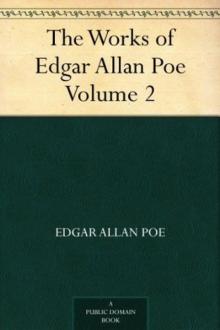 The Works of Edgar Allan Poe — Volume 2
The Works of Edgar Allan Poe — Volume 2 The Works of Edgar Allan Poe — Volume 1
The Works of Edgar Allan Poe — Volume 1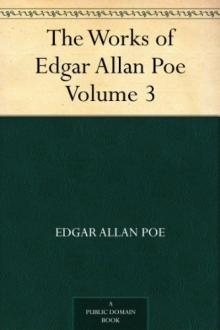 The Works of Edgar Allan Poe — Volume 3
The Works of Edgar Allan Poe — Volume 3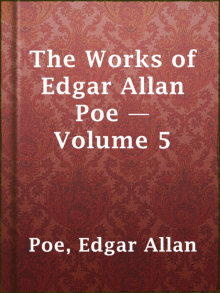 The Works of Edgar Allan Poe — Volume 5
The Works of Edgar Allan Poe — Volume 5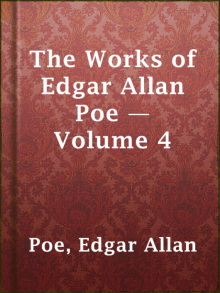 The Works of Edgar Allan Poe — Volume 4
The Works of Edgar Allan Poe — Volume 4 The Tell-Tale Heart
The Tell-Tale Heart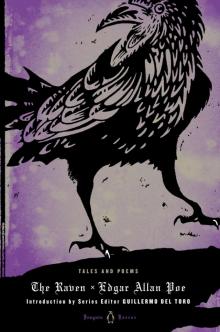 The Raven (Penguin)
The Raven (Penguin)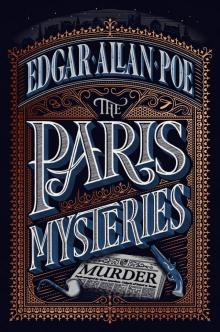 The Paris Mysteries
The Paris Mysteries Tales of Terror from Edgar Allan Poe
Tales of Terror from Edgar Allan Poe The Fall of the House of Usher
The Fall of the House of Usher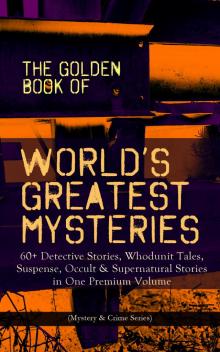 The Golden Book of World's Greatest Mysteries
The Golden Book of World's Greatest Mysteries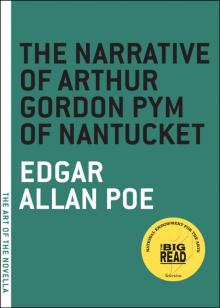 The Narrative of Arthur Gordon Pym of Nantucket
The Narrative of Arthur Gordon Pym of Nantucket Ligeia
Ligeia The Landscape Garden
The Landscape Garden Complete Tales & Poems
Complete Tales & Poems Great Tales and Poems of Edgar Allan Poe
Great Tales and Poems of Edgar Allan Poe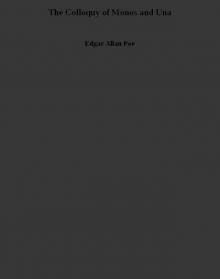 The Colloquy of Monos and Una
The Colloquy of Monos and Una The Oblong Box
The Oblong Box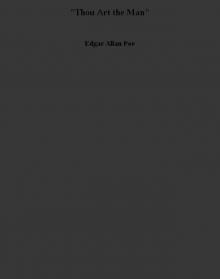 Thou Art the Man
Thou Art the Man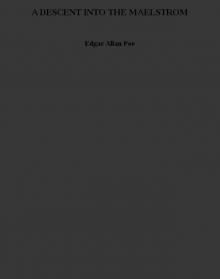 A DESCENT INTO THE MAELSTROM
A DESCENT INTO THE MAELSTROM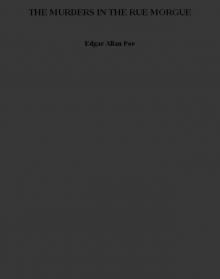 THE MURDERS IN THE RUE MORGUE
THE MURDERS IN THE RUE MORGUE The Business Man
The Business Man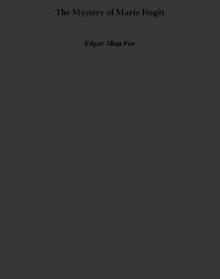 The Mystery of Marie Rogêt
The Mystery of Marie Rogêt Metzengerstein
Metzengerstein The Man That Was Used Up
The Man That Was Used Up William Wilson
William Wilson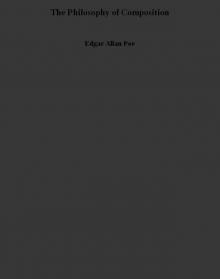 The Philosophy of Composition
The Philosophy of Composition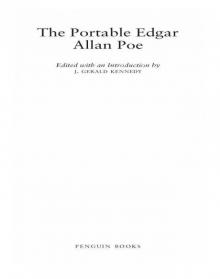 The Portable Edgar Allan Poe
The Portable Edgar Allan Poe Bon-Bon
Bon-Bon A Predicament
A Predicament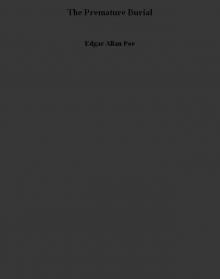 The Premature Burial
The Premature Burial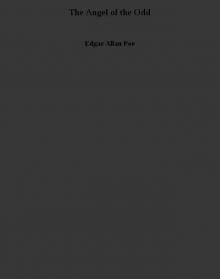 The Angel of the Odd
The Angel of the Odd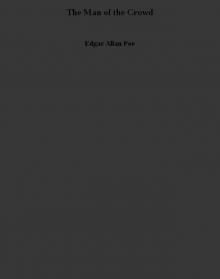 The Man of the Crowd
The Man of the Crowd Never Bet the Devil Your Head
Never Bet the Devil Your Head The Tell-Tale Heart and Other Writings
The Tell-Tale Heart and Other Writings The System of Doctor Tarr and Professor Fether
The System of Doctor Tarr and Professor Fether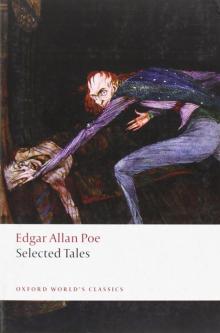 Selected Tales (Oxford World's Classics)
Selected Tales (Oxford World's Classics) Essential Tales and Poems of Edgar Allan Poe (Barnes & Noble Classics Series)
Essential Tales and Poems of Edgar Allan Poe (Barnes & Noble Classics Series) MS. Found in a Bottle
MS. Found in a Bottle Some Words with a Mummy
Some Words with a Mummy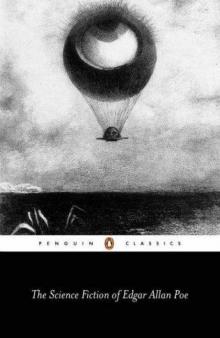 The Science Fiction of Edgar Allan Poe (Penguin Classics)
The Science Fiction of Edgar Allan Poe (Penguin Classics) King Pest
King Pest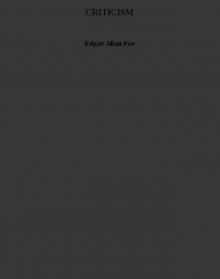 CRITICISM
CRITICISM How to Write a Blackwood Article
How to Write a Blackwood Article Mystification
Mystification Diddling Considered as One of the Exact Sciences
Diddling Considered as One of the Exact Sciences Steampunk Poe
Steampunk Poe The Literary Life of Thingum Bob, Esq.
The Literary Life of Thingum Bob, Esq.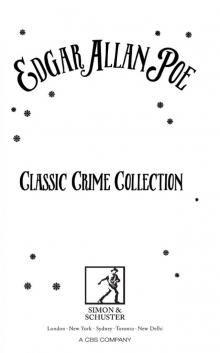 Classic Crime Collection
Classic Crime Collection Complete Stories and Poems of Edgar Allen Poe
Complete Stories and Poems of Edgar Allen Poe Berenice
Berenice The Black Cat
The Black Cat The Slender Poe Anthology
The Slender Poe Anthology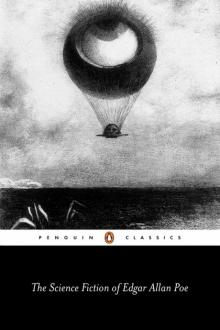 The Science Fiction of Edgar Allan Poe
The Science Fiction of Edgar Allan Poe The Assignation
The Assignation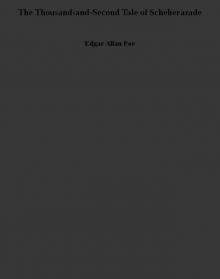 The Thousand-and-Second Tale of Scheherazade
The Thousand-and-Second Tale of Scheherazade The Raven and Other Short Stories
The Raven and Other Short Stories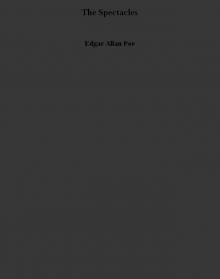 The Spectacles
The Spectacles Hop-Frog
Hop-Frog The Purloined Letter
The Purloined Letter Mellonta Tauta
Mellonta Tauta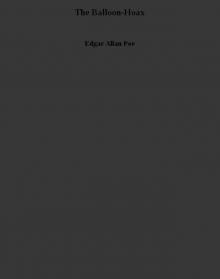 The Balloon-Hoax
The Balloon-Hoax Landor's Cottage
Landor's Cottage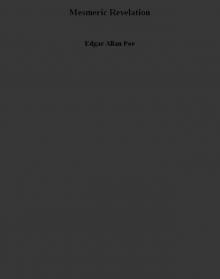 Mesmeric Revelation
Mesmeric Revelation The Pit and the Pendulum
The Pit and the Pendulum